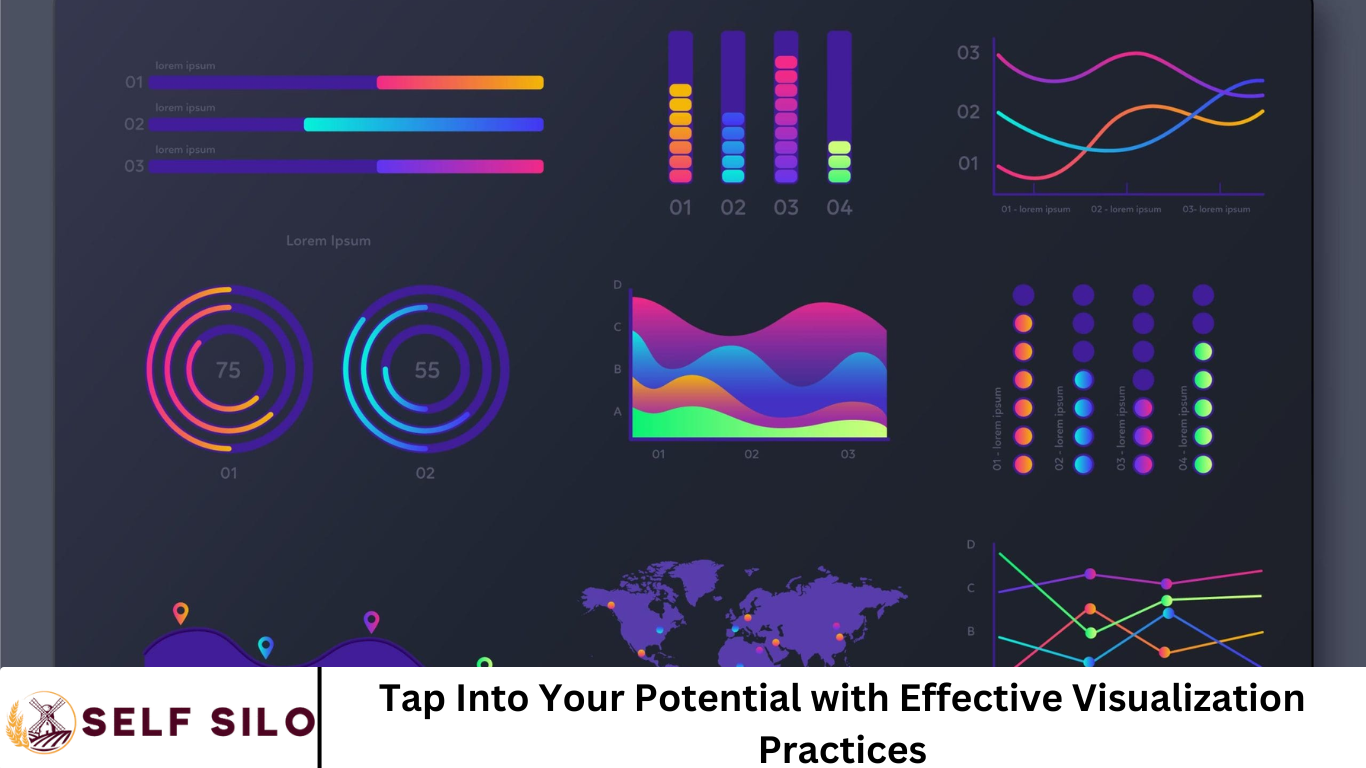In the pursuit of personal growth and achievement, one of the most powerful tools at our disposal is often overlooked: visualization. The practice of visualization is not a new-age concept but a time-tested technique used by successful athletes, entrepreneurs, and thought leaders to manifest their goals and reach their full potential.
Whether you’re striving to boost your confidence, advance your career, or improve your health, effective visualization practices can serve as the catalyst for profound transformation.
We will explore how to tap into your potential with visualization, delve into the science behind it, outline practical visualization techniques, and offer actionable tips to make visualization a consistent part of your self-improvement journey.
More Read: Resilience in Action: Strategies for Overcoming Life’s Setbacks
What is Visualization?
Visualization is the practice of creating vivid mental images to simulate desired outcomes. It involves focusing your mind on a goal or scenario and mentally rehearsing it as if it were already real. This technique leverages the brain’s neuroplasticity, enabling you to rewire neural pathways and reinforce positive behaviors and beliefs.
The Science Behind Visualization
Numerous studies in neuroscience and psychology support the effectiveness of visualization. When you visualize an activity, your brain activates similar neural networks as it would during actual performance. For instance, athletes who mentally rehearse a sport can improve their skills almost as effectively as those who physically train.
Dr. David Hamilton, a former pharmaceutical scientist and author, explains that visualization can alter brain chemistry, boost motivation, and even affect physical health. Visualization helps the brain recognize and reinforce goals, making them more attainable through consistent mental rehearsal.
Benefits of Visualization
- Enhances Focus and Clarity: Visualization helps clarify goals and maintain focus. By regularly visualizing success, you keep your mind aligned with your objectives.
- Boosts Confidence and Self-Esteem: Seeing yourself succeed in your mind’s eye builds a sense of certainty and self-belief.
- Improves Performance: Whether in sports, business, or creative endeavors, visualization enhances performance by strengthening the connection between the mind and body.
- Reduces Anxiety and Stress: Visualization techniques like guided imagery can calm the nervous system and reduce stress.
- Promotes Positive Thinking: Focusing on successful outcomes rewires the brain for optimism and resilience.
Types of Visualization Practices
- Guided Visualization: This involves listening to an audio guide that leads you through a mental scenario. It is especially useful for beginners.
- Creative Visualization: A more free-form technique where you imagine your desired outcomes in vivid detail. This method is often used in goal setting and manifestation.
- Mental Rehearsal: Commonly used by athletes, this involves visualizing every step of a performance or task to prepare mentally and emotionally.
- Vision Boards: A physical or digital collage of images and affirmations that represent your goals and dreams. This visual representation serves as a daily reminder of your aspirations.
- Affirmation-Based Visualization: Combines visualization with positive affirmations to reinforce belief in your ability to succeed.
How to Practice Effective Visualization
- Set Clear Goals: Know exactly what you want to visualize. The more specific, the better.
- Create a Quiet Environment: Find a calm space free of distractions to practice your visualization.
- Use All Five Senses: Make your mental image as detailed as possible. What do you see, hear, feel, smell, and taste?
- Engage Emotionally: Feel the joy, excitement, or satisfaction associated with your success. Emotions strengthen the impact of visualization.
- Practice Regularly: Consistency is key. Visualize daily for at least 10–15 minutes to reinforce your goals.
- Combine with Action: Visualization is powerful, but it must be paired with effort. Use it as a motivational tool to guide your actions.
Examples of Visualization in Action
- Athletes: Olympic swimmer Michael Phelps visualized every race in detail before diving in, including potential challenges and how he would overcome them.
- Entrepreneurs: Oprah Winfrey has long spoken about the power of intention and visualization in achieving her monumental success.
- Students: Visualizing acing an exam or confidently delivering a presentation can enhance performance and reduce anxiety.
Common Pitfalls and How to Avoid Them
- Lack of Specificity: Vague goals lead to vague results. Be clear and detailed in your visualizations.
- Inconsistency: Sporadic practice weakens effectiveness. Make it a daily habit.
- Negative Visualization: Focusing on fears or worst-case scenarios can reinforce anxiety. Stay positive.
- Overreliance on Visualization: While visualization is powerful, it should not replace action. Use it to complement your efforts.
Tips for Making Visualization a Habit
- Schedule It: Set a specific time each day for visualization, such as morning or bedtime.
- Use Tools: Try apps or guided audio recordings to stay on track.
- Journal Your Experience: Writing down your visualization goals and experiences can enhance clarity and commitment.
- Start Small: Begin with short sessions and gradually increase duration.
- Be Patient: Change takes time. Trust the process and stay committed.
Visualization for Different Life Goals
- Career Advancement: Visualize landing your dream job, nailing interviews, or leading successful projects.
- Health and Fitness: Picture yourself achieving your fitness goals or recovering from illness.
- Relationships: Imagine healthy, loving relationships and resolving conflicts peacefully.
- Financial Abundance: Visualize financial security, successful investments, or growing your business.
- Personal Growth: Envision becoming more confident, resilient, or mindful.
Frequently Asked Question
What is visualization, and how does it help in personal development?
Visualization is the practice of mentally imagining specific outcomes, goals, or scenarios to create a desired reality. It helps in personal development by reinforcing positive behaviors, boosting motivation, increasing confidence, and aligning your subconscious with your conscious goals.
Is there scientific evidence that visualization really works?
Yes. Studies in neuroscience show that visualization activates the same neural pathways as actual performance. Athletes, for example, can improve their skills by mentally rehearsing movements, and similar benefits apply to public speaking, learning, and goal achievement.
How long should I practice visualization each day?
Start with 10–15 minutes daily. Consistency is more important than duration. As you build the habit, you can extend your sessions or incorporate brief visualizations throughout your day.
Can anyone use visualization, or is it only for creative or spiritual people?
Anyone can use visualization, regardless of personality or background. It’s a practical tool used by professionals in sports, business, education, and health. No special creative or spiritual skill is required—just focus, intention, and practice.
What’s the difference between visualization and daydreaming?
Visualization is intentional and goal-oriented, involving specific mental images tied to real-life objectives. Daydreaming is often random and unstructured. Visualization actively programs the brain for success; daydreaming may not lead to any action or change.
Do I need to use tools like vision boards or apps to be successful?
Tools like vision boards, guided audio, and apps can enhance your practice, but they’re not required. The most important elements are clarity, emotion, and consistency. Use tools that support your focus and motivation.
How can I tell if my visualization practice is working?
Signs that visualization is working include increased motivation, clearer focus, improved performance, and noticeable progress toward your goals. You may also feel more confident and emotionally connected to your future success.
Conclusion
Visualization is a potent, science-backed technique that can transform your mindset, enhance performance, and help you realize your fullest potential. By dedicating just a few minutes each day to visualizing your goals with clarity and emotion, you set the stage for real, lasting change. Whether you’re new to the practice or looking to deepen your existing routine, the key is consistency, specificity, and coupling mental imagery with meaningful action.


